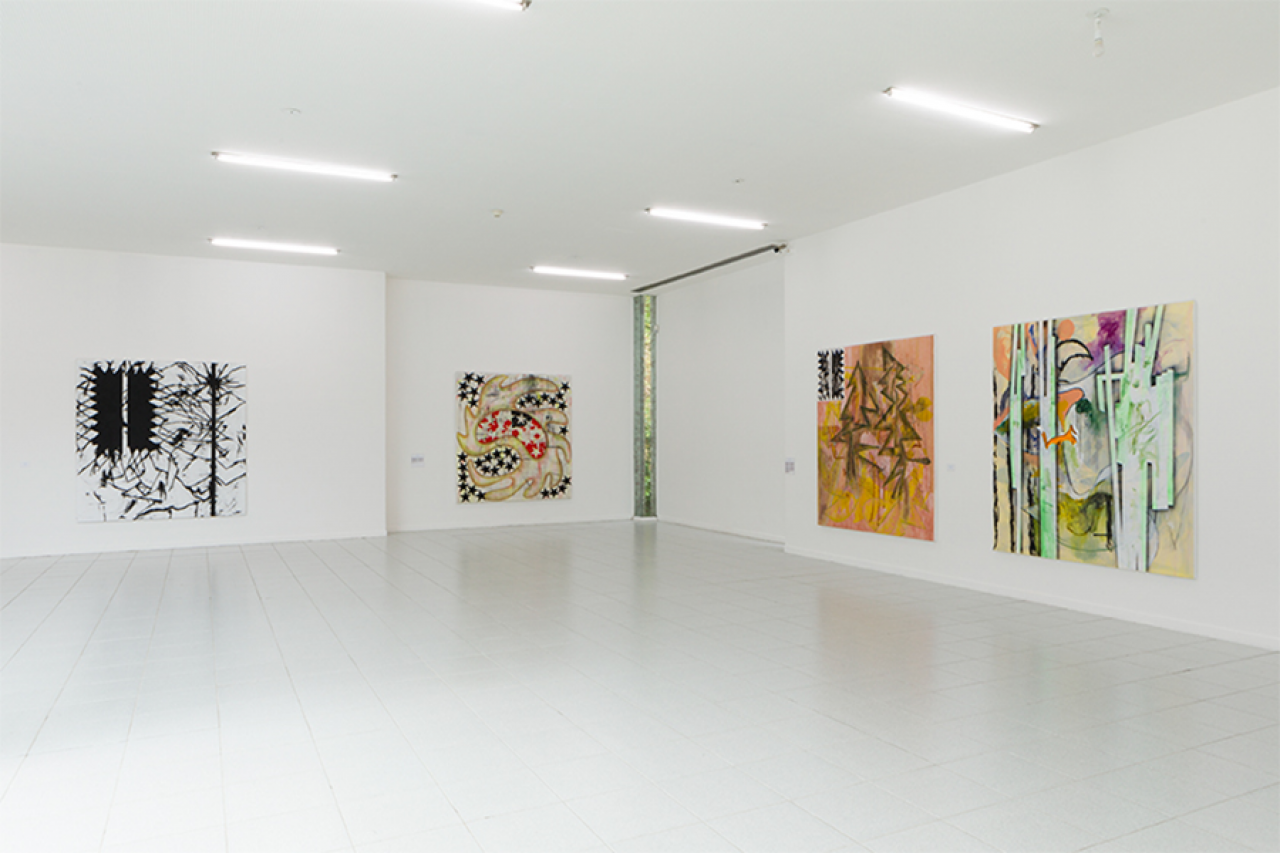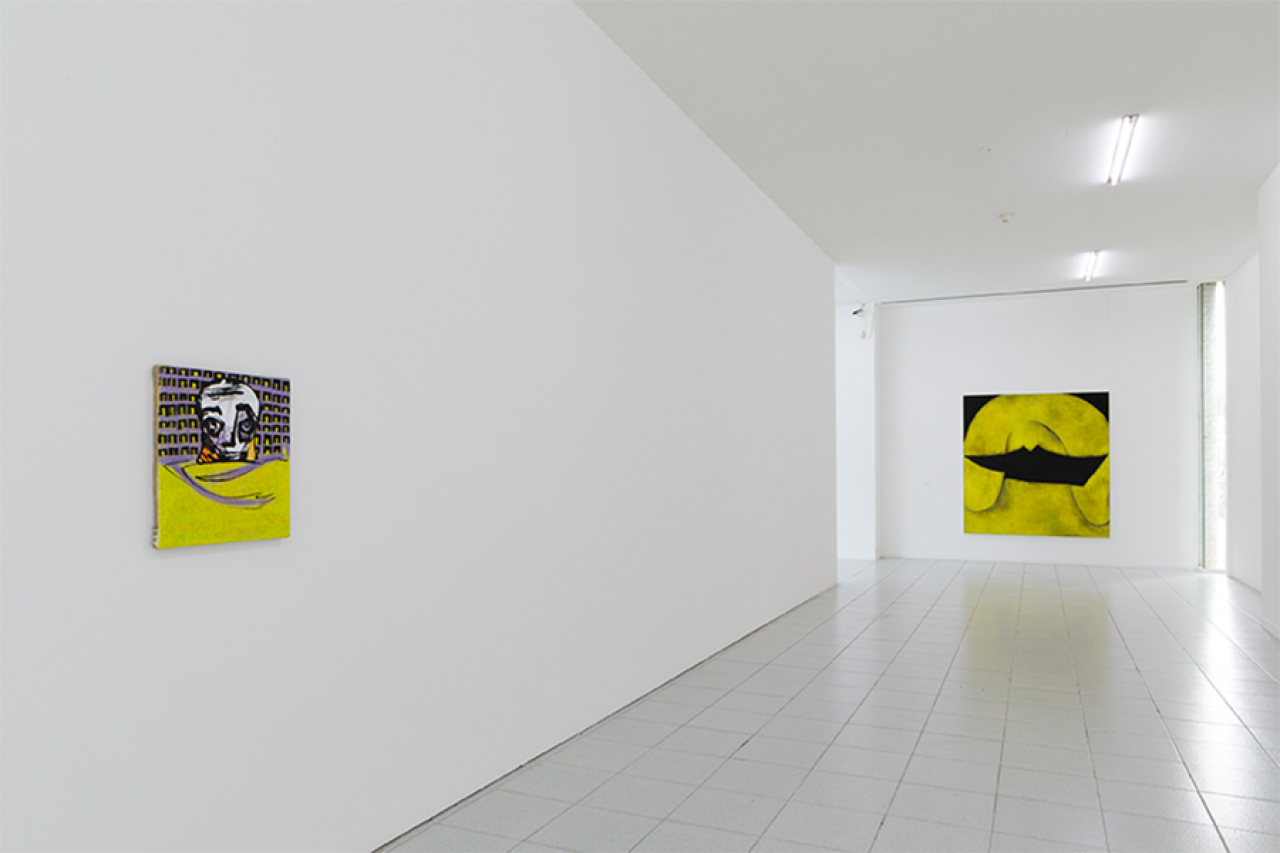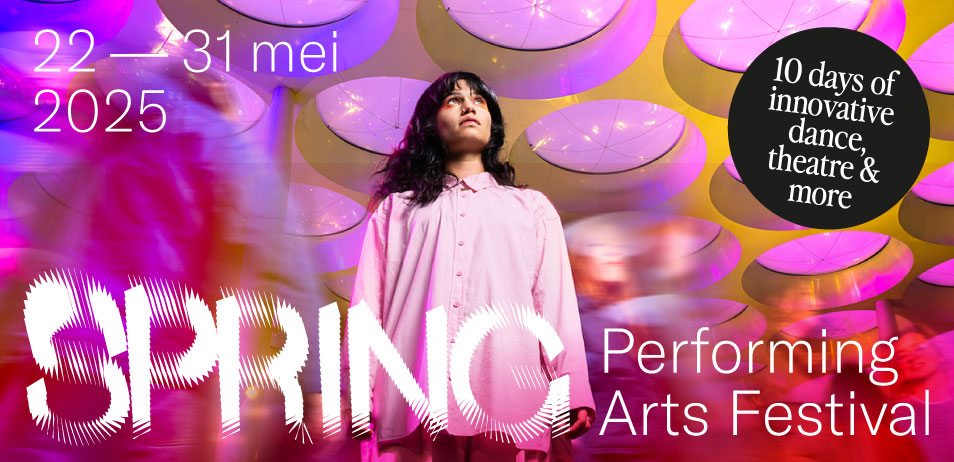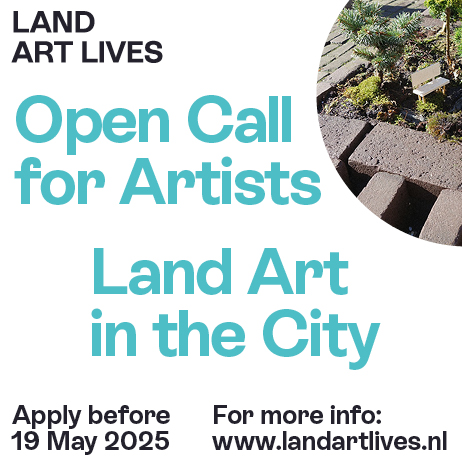Charline von Heyl – It’s a trap!
Every time I see a Charline von Heyl painting an alarm pops in my brain: “It’s A Trap!”. This phrase was said by the leader of Mon Calamari rebels, during the Battle of Endor in the 1983 Star Wars film Episode VI: Return of the Jedi. In the movie, as the Alliance mobilize its forces in a concerted effort to destroy the Death Star, Admiral Ackbar encounters an unexpected ambush, which leads him to exclaim, “It’s a trap!”, and I guess that is how I felt many times in front of every of her paintings in the exhibition currently on view at the Museum Dhondt-Dhaenens, just a few kilometers away from Ghent.
Before this exhibition I had seen only a few paintings from Charline, mostly spread in group shows or collections (maybe also in a fair?), but specially surfing through the internet. Within these encounters, the paintings were already catching my attention, but I could only understand, when I saw more than one painting alone, that the game that Von Heyl plays while painting needs not only of an intensive amount of labour—Charlotte, the curator at Dhondt-Dhaenens explains me she usually does a maximum of 12 paintings a year—but also a long and, while demanding, relaxed reading of the work.
In the catalogue’s introduction of the exhibition, art historian Dirk Luckow comments that “Charline von Heyl succeeds into turning every abstract picture into a complex, unforeseen structure. Her works provoke many associations—with art history, but also with familiar forms: a bowling pin, a blind, a comb or a piece of fabric that recalls comics or cartoons.” It is because of this that we can look for so long into von Heyl paintings and, when we think we got it, realize that there was something that destabilizes everything else that we thought before. This happened to me with some paintings I had seen in reproductions, thinking I had understood, but it was not until I was there when I realized that, what seemed like a splash made by a nonchalant painter gesture was actually printed or silkscreened, opening a new door, creating a new layer of both meaning and process we might find also in other artists like Amy Sillman or Albert Oehlen.
Let’s come back to the idea of trap that I introduced before and that Charline uses not only with printed splashes, but also with wide references to art history that can be entered from very different points of view or the use of silhouettes, that sometimes turn into starts, but that are, at the end, just lines and sometimes triangles, but never thinking in the star’s meaning. I highly enjoy when she uses these almost digital almost cartoonish solutions to her paintings because they help into the building I feel her work is about. It feels that when these resources enter the composition, we might have clear what is the background and what is the foreground, but it is not until we get closer we can see that maybe it was the first thing that was painted and then the painting has grown around it, demanding always that the viewer checks what s/he believed at first sight.
It might feel like quite a long journey to visit this exhibition if we have seen her paintings online, sometimes in such a high resolution that we can zoom in and feel we appreciate all the details, but, if you have the chance and you happened to miss the show she had in Hamburg this is an amazing opportunity to discover a painter that is widely known in Germany and US but maybe not that much outside those circles. Do not believe what her paintings look like on Instagram, but also do not believe what her paintings look like on the exhibition, at the end, it’s a trap!






